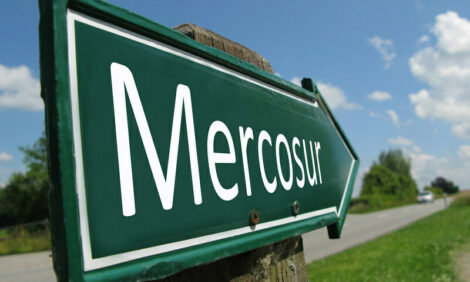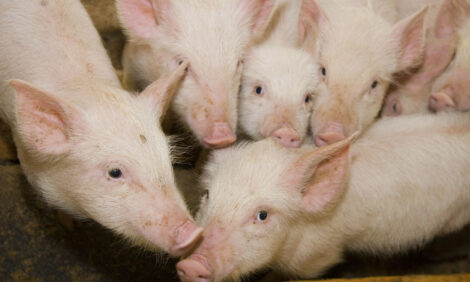



Market Preview: Time to "Make Hay"
US - Weekly U.S. Market Preview w/e 22nd June, provided by Steve R. Meyer, Ph.D., Paragon Economics, Inc.What a difference a week can make! While I remain steadfast in my concern about the hog and pork markets this fall, the run-up in cash hogs and some reduction in corn and soybean meal futures this week have me, and many readers, no doubt, in a much better mood -- at least for now. The old motto, "Make hay while the sun shines" applies to more than just making hay right now!
USDA's 51-52% lean pork carcass cutout value gained $3 last week (see Figure 1). The weekly average for this benchmark value indicator was $76.36. That's the highest level since the last week of May and less than $1.50 from this year's previous weekly high of $77.83 in mid-May.

The cutout value increase drove a major improvement in estimated gross packer margin (see Figure 2) and provided a big incentive for packers to chase hogs and push slaughter rates this week. As the graph shows, gross margins have been pretty good most of this year, but a $24/head margin in June is almost unheard of. Remember as you look at that graph that those are gross margins from which labor, utilities, packaging, etc. must be paid. Those costs have gone up for packers just like they have for you, so net margins are not that much better, but they are still pretty good for June!

What is impressive about that gain is that it occurred in a week when slaughter was 5.7% larger than one year ago. Packers were very aggressive buyers and have continued to push slaughter up this week with the total increasing by 2.6% from last week and 5.9% from last year through Wednesday.
The historical data do not provide us with a very clear-cut week for the "normal" seasonal peak. The gray line in Figure 1 tells us that the yearly high can occur any time from mid-May to early July. Last year's high occurred in this week and, given the strength of cutouts and cash hogs, we could certainly see a repeat. It is very difficult for these markets to sustain this strength after retailers have made their July 4th purchases.
Wednesday's cutout value reached $78.89 with loins, butts and ribs all gaining ground. Hams, though, fell by $1.15 to a primal value of $61.72. This is the normal seasonal doldrums for hams, but difficulties with exports to Mexico have made that situation worse this summer compared to the past few. Bellies were unchanged in Wednesday trading, but the primal value is still over $1.00/lb.
Yesterday's weighted average hog price on the afternoon national report was $76.51/cwt. carcass, up $1.14 for the day. That is a base price, so most producers would take home $1.50 to $2 more than that, making the total somewhere near $78/cwt. carcass or $58.50/cwt live. That provides a very nice profit even with high-priced feed.
For perspective, the record high for the weighted average national afternoon purchase price was in May 2004 and $78.31 -- just $1.80 above yesterday's price.
Finally, all of this is apparently being done without dipping deep into the population of market hogs. Last week's average live weights were estimated at 269 lb., the same as the week before and just 2 lb. lower than last year.
History says that weights should fall quickly about now and this week's push by packers may bring that about, but it appears that there are plenty of hogs to feed this frenzy. That's a positive since it implies that this entire surge is driven mainly by demand.
Tyson Joins Antibiotic-Free Ranks
The latest development on the natural, free-range, antibiotic-free product scene is the announcement by Tyson that it will eliminate antibiotics from its chicken production units and tag its products as "raised without antibiotics." Tyson's announcement said its decision was based on its own research indicating that over 90% of consumers "agree it is important to have fresh chicken produced and labeled as 'raised without antibiotics," according to a story at www.meatingplace.com.
There are three interesting aspects to this development: First, Tyson's decision may be based on consumer research but the anti-meat crowd (HSUS, PETA, CSPI, Keep Antibiotics Working, etc.) will be quick to claim that Tyson is bowing to their political and economic pressure.
Second, Tyson cited "the size and scale of our operations" as a major reason it can make this move. Raising any meat animal without antibiotics is a risky proposition. Tyson's multiple farms and large production base will allow it to remain a viable supplier even if a disease situation necessitates antibiotics at one or a few locations. This is one of the reasons why I, and other industry analysts, have warned small-farm proponents that natural-antibiotic free, etc. is not a panacea. Big guys can do those things, too, and their size and scope makes them more dependable suppliers than single-location, small operations.
Finally, and this is an extension of point number two, Tyson's announcement pointed out that while producing antibiotic-free chicken is more costly, there is still room for good margins. The message: "We can do this for less added cost than the current antibiotic-free producers can." This has happened in other specialty product production -- organic vegetables, for example.
Niches do not last long unless one has unique, non-duplicable skills, knowledge or an effective barrier to entry. None of those is very common, so expect more encroachment of the "big boys" into the niches that have heretofore been the territory of small producers.










